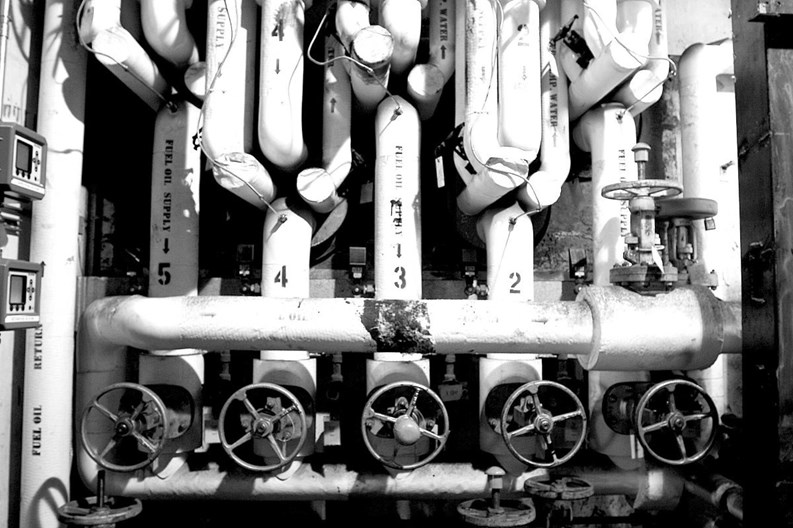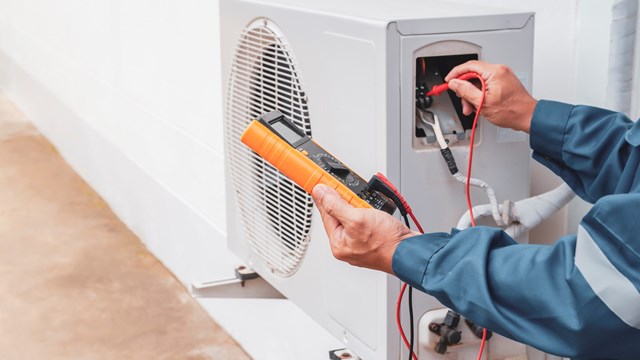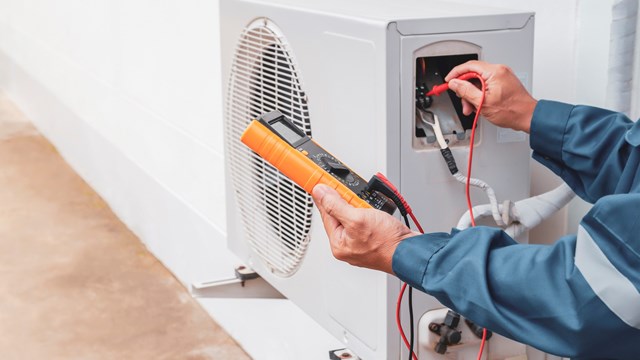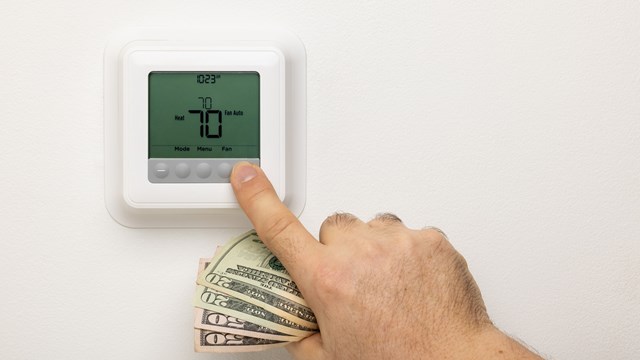Even when living in a multi-family building, individual residents must handle some of the same responsibilities as those of a single-family homeowner. While board members will be more involved than other residents in helping to ensure proper maintenance of their community’s infrastructure, every resident of a co-op or condo community shares partial ownership of the community’s common property—and that should translate into awareness of the community’s common needs.
Being Aware
Part of that ownership sensibility means board members and other residents must keep an eye on the components of their building, including boilers, elevators, HVAC units, electrical systems, and other systems that must be maintained and occasionally replaced. Even the most sturdily built and well-maintained boiler or HVAC unit will eventually fail. And while it is impossible to pinpoint when a major piece of building equipment will finally give out, trained professionals can help boards and managers estimate when they will need to be replaced.
Such estimates can be helpful to board members and others concerned with the operation of residential buildings, by enabling them to plan their short-term and long-term budgets and capital improvement schedules. But even with professionals on call, building administrators have to stay vigilant, and they must know what to look for, and know when to ask their consultants for help.
The Life of the Boiler
Clearly, one of the most crucial systems in any residential building is the boiler. While everyone knows when the machine isn’t working on a cold day in January because they can see their breath and are burrowing under their blankets, fewer residents know what actually makes the boiler run. Even fewer know what must be done to ensure that the boiler continues working.
Regular checks of the boiler’s cold water use can reveal discrepancies in usage that could point to a leak or another problem with the system. Even more than a building’s other systems, the boiler must be regularly and properly maintained to get the most out of it and ensure its longevity, says Stewart Willis, a senior project manager and reserve specialist for The Falcon Group, an engineering and architectural firm based in Bridgewater, New Jersey.
“Proper maintenance or lack of maintenance could mean the difference between a boiler lasting 40 years, or just 15 years, if it was totally neglected,” Willis says. “Also, there is the question of the quality of the components installed last time. The quality of workmanship is crucial, too.”
During a boiler’s life, it may undergo many smaller maintenance jobs before it is replaced by a new model. Generally, newer boilers will last 25 to 30 years with proper maintenance, according to Phil Kraus, owner of Fred Smith Heating & Plumbing Co., in Manhattan.
Richard Blaser, president of Atlas Welding in the Bronx, which services boilers and manufactures and services trash compactors, says his company sees some working boilers that are a century old. “They made them pretty sturdy [back] then, and they lasted. Boilers manufactured since the 1970s last 25 to 30 years,” he says.
Often, the question of when to replace a boiler is really a question of what repairs have been done to it. Leaks in a boiler system tend to wear out the system very quickly, Blaser says. “Adding fresh cold water adds corrosive elements to the system. You have to monitor how much water is going into the system.”
Another key to monitoring a boiler system is good record-keeping, says Blaser. A log book for the boiler should be kept, and maintenance people should regularly record the amount of water used by the system. A record should be kept in the log book of when service calls were made, and what was done during those calls. Regular readings of the stack temperature also will enable service personnel to have a good indication of the efficiency of the boiler.
The Air in There
Unlike some building systems, which are fairly straightforward, HVAC systems have many components, including cooling towers, water chillers, air handlers and heat exchangers. All of those components tend to last 25 to 30 years, depending upon the quality of the component and the quality and frequency of maintenance, Willis says. Kraus concurs that HVAC systems should last an average of 30 years, maybe even 40. And considering the age of many prewar buildings in New York City, valves and certain mechanical parts could last upwards of 50 years, but each component is different, he says.
“When you start to experience recurring problems with any system, such as severe service disruptions, it’s usually a good indication that the system may have reached its serviceable life,” Willis says. “That’s a good time to consult your professionals.”
A good adage says Richard Silver of American Pipe and Tank and Manhattan Cooling Towers, is to “take care of your heating system in the summer and cooling equipment in the winter.” He recommends that one visually inspect the towers overall condition, especially structural integrity; check the condition of interior fill, which when damaged can lead to loss of efficiency, higher energy costs and wasteful use of chemical treatment; perform a vibration analysis to determine moving components that show signs of wear; and examine all piping to gauge repair.
This is also where using—and more importantly, reviewing—the logbook is important. “Whoever’s in charge of the building’s maintenance should review that information,” Blaser says. For some buildings, that could be the superintendent, and for others, it might be the president of the board.
Guts and Garbage
Trash compactors have much shorter life spans than boilers, but part of that is due to their rough use. A compactor often lasts just 8 to 10 years. “A trash compactor takes a lot of abuse,” says Blaser. “People throw a lot of things down a compactor that they shouldn’t throw down there.” A rule of thumb for repair or replacement of a trash compactor is that when repairs to it exceed half that cost to replace the unit, full replacement is probably the best option, Blaser continues—though he notes that the same rule doesn’t necessarily apply to other building components.
As far as the building’s plumbing and pipe system, frequent inspection will tell the exact amount of wear and tear. “In some cases the original piping in a building is in relatively good repair. Of course, when things are replaced, we use more modern up-to-date materials,” notes Kraus. Be most attentive to moving or mechanical parts, he adds, especially pumps and valves, whose life spans are affected by constant usage.
Up on the Rooftop
Few parts of a residential building are as important as the roof—it helps maintain the temperature in the building no matter what the thermometer reading says, protects its contents from the ravages of leaks and water damage, and literally keeps the rain off residents’ heads. A neglected roof is a liability—it hemorrhages money in the form of constant stopgap repair work, damage to property, and possibly even legal action brought by angry shareholders. Most roofs last from around 10 to upwards of 25 or 30 years, depending on various factors.
Another key rooftop element is the ubiquitous water tank. Generally in New York City, a roof tank serves as a storage system for domestic water and as standpipe water for firefighting.
“Cedar tanks last 30-35 years generally, prior to requiring replacement,” says Andy Rosenwach, owner of The Rosenwach Group, a roof tank and building maintenance company located in Long Island City. “Wood becomes spongy with algae growth. Tanks start to leak” and eventually need replacing, he says, and adds that several factors can shorten the life span, including exhaust from cooling towers and boilers, as well as damage from birds, which may cause unnecessary deterioration and affect the water quality.
On the other hand, new technologies and improved building materials may help to extend a tank’s longevity, Rosenwach says. “When it comes to a water tank it is advisable to allow the tank to go the distance. With today’s new controls and roofing materials a tank should require minimum repairs during the course of its life span. The cedar roof tank should be replaced at a minimum of 30 years after installation. Budgeting should be done from this time frame.”
Record keeping is an essential part of the maintenance process for roof tanks, too, says Rosenwach. Records should be kept on the year the tank is installed; the fire-rated reserve capacity; the number of annual cleanings and bacteria testing; and how often the pipe is replaced during the course of the tank’s life span.
Going Up?
In addition to keeping a weather eye on their boiler and HVAC equipment, wise building administrators plan for regular expenditures on elevators, including refurbishing the interior of the cabs. Elevator system upkeep can be a substantial—and crucial—expense, Willis says, which is why property mangers and board members should be very sure of the professionalism of those they are hiring to maintain those systems.
“Using quality contractors and having regular quality maintenance are essential to getting the most out of an elevator system,” Willis says.
Elevator service contractors generally check the system once a month, keeping a log of the system’s condition and recent maintenance in the machine room. The contractor will do a visual inspection of the system, and oil and grease the system as needed. Based on the maintenance record, an elevator consultant (who is different from the elevator contractor, who sells and maintains the systems), can be hired to evaluate the system. A consultant can put together specifications for improvements to the system ordered by the board, and then put the specs out to bid and help with the contractor selection process.
“You have to find a reputable elevator contractor and a reputable elevator consultant,” says Kenneth Breglio, executive vice president of BP Elevator in the Bronx.
For the capital reserve budget, elevator maintenance is usually broken into two line items: interior cab renovations, which are done every 12 to 15 years; and modernization of the entire system, which is done every 25 to 30 years, Willis explains. “That tends to be a very expensive project—all of the control systems are upgraded for technology and safety.”
Because of constantly advancing technology, control systems for elevators now have life spans of just 20 to 25 years. The motor and cabs of an elevator system can be antiquated, but all of the controls are computerized these days and thus, that part of the system must be regularly upgraded, says Breglio. “Sometimes, 10 to 15 years after replacing an elevator’s controls, you look for a part and it’s no longer available. That’s the downside of the computer era. It’s very difficult to tell an owner that the piece they had installed 10 or 15 years ago is now obsolete.”
Getting Wired!
Electrical systems also tend to be upgraded on more of an as-needed basis. But the mangers of some larger residential buildings earmark funds for replacement of transformers or switch-gear systems, which tend to have 25-year life spans. Other electrical systems, such as security systems and intercom/entry systems, will likely need to be replaced—or at least upgraded—more frequently, again because of advances in technology and the changing needs of a building’s residents. Some residents want greater security, others desire greater convenience (as in the case of keyless entry systems, for example), and so changes to the system are made.
Regardless of the age of the security system or entry system, building personnel should check it at least once a month, to see that the system is working properly. Some boards of residential buildings are beginning to add more line item repairs to their annual budgets to account for upgrades of computer systems and Internet systems, Willis says. “Due to the pace of technology, a building’s computer network might have a life span of 15 to 20 years,” he says.
System Checks
In addition to keeping regular logs of system equipment in a residential building, board members should commission a capital reserve study by qualified consultants at least every few years. A building whose management has maintained meticulous service records benefits the most from such studies, Willis says.
“The really well-run buildings will have every pump labeled, and a record will be kept of each servicing and replacement of each part. There are many variables involved—some systems are exposed to weather, which could be a variable,” Willis says. “Given the many variables, it’s good to revisit the capital reserve schedule every two to three years. It’s a moving target.”
The building super, maintenance staff and management must be aware of the existing maintenance schedule for each building system and how much money is spent on repairs, according to Kraus. “Buildings should keep a chart on what they’re spending. You’ve got to pay attention to it. A good manager or a good super should keep a log and always be aware of each building component’s usage. There’s certain times when repair vs. replacement is better. Efficiency is the key.”
Jonathan Barnes is a freelance writer and a frequent contributor to The Cooperator and other publications.










2 Comments
Leave a Comment